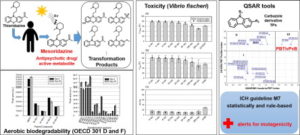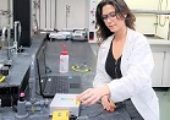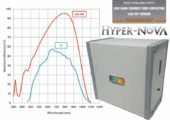ML Wilde, J Menz, C Leder, K Kümmerer – Science of The Total Environment, 2017
Abstract
The lack of studies on the fate and effects of drug metabolites in the environment is of concern. As their parent compounds, metabolites enter the aquatic environment and are subject to biotic and abiotic process. In this regard, photolysis plays an important role. This study combined experimental and in silico quantitative structure-activity relationship (QSAR) methods to assess the fate and effects of Mesoridazine (MESO), a pharmacologically active human drug and metabolite of the antipsychotic agent Thioridazine, and its transformation products (TPs) formed through a Xenon lamp irradiation. After 256 min, the photodegradation of MESO ⋅ besylate (50 mg L− 1) achieved 90.4% and 6.9% of primary elimination and mineralization, respectively. The photon flux emitted by the lamp (200–600 nm) was 169.55 J cm− 2. Sixteen TPs were detected by means of liquid chromatography-high resolution mass spectrometry (LC-HRMS), and the structures were proposed based on MSn fragmentation patterns. The main transformation reactions were sulfoxidation, hydroxylation, dehydrogenation, and sulfoxide elimination. A back-transformation of MESO to Thioridazine was evidenced. Aerobic biodegradation tests (OECD 301 D and 301F) were applied to MESO and the mixture of TPs present after 256 min of photolysis. Most of TPs were not biodegraded, demonstrating their tendency to persist in aquatic environments. The ecotoxicity towards Vibrio fischeri showed a decrease in toxicity during the photolysis process. The in silico QSAR tools QSARINS and US-EPA PBT profiler were applied for the screening of TPs with character of persistence, bioaccumulation, and toxicity (PBT). They have revealed the carbazole derivatives TP 355 and TP 337 as PBT/vPvB (very persistent and very bioaccumulative) compounds. In silico QSAR predictions for mutagenicity and genotoxicity provided by CASE Ultra and Leadscope® indicated positive alerts for mutagenicity on TP 355 and TP 337. Further studies regarding the carbazole derivative TPs should be considered to confirm their hazardous character.

… The irradiation of the lamp, measured with a Black Comet UV-VIS spectroradiometer model C (StellarNet Inc., Florida, USA), was: 200–280 nm: 1.01 W m − 2 ; 280–315 nm: 3.29 W m − 2 ; 315–380 nm: 12.91 W m − 2 , 380–850 nm: 243.16 W m − 2 . The spectrum of the lamp …





